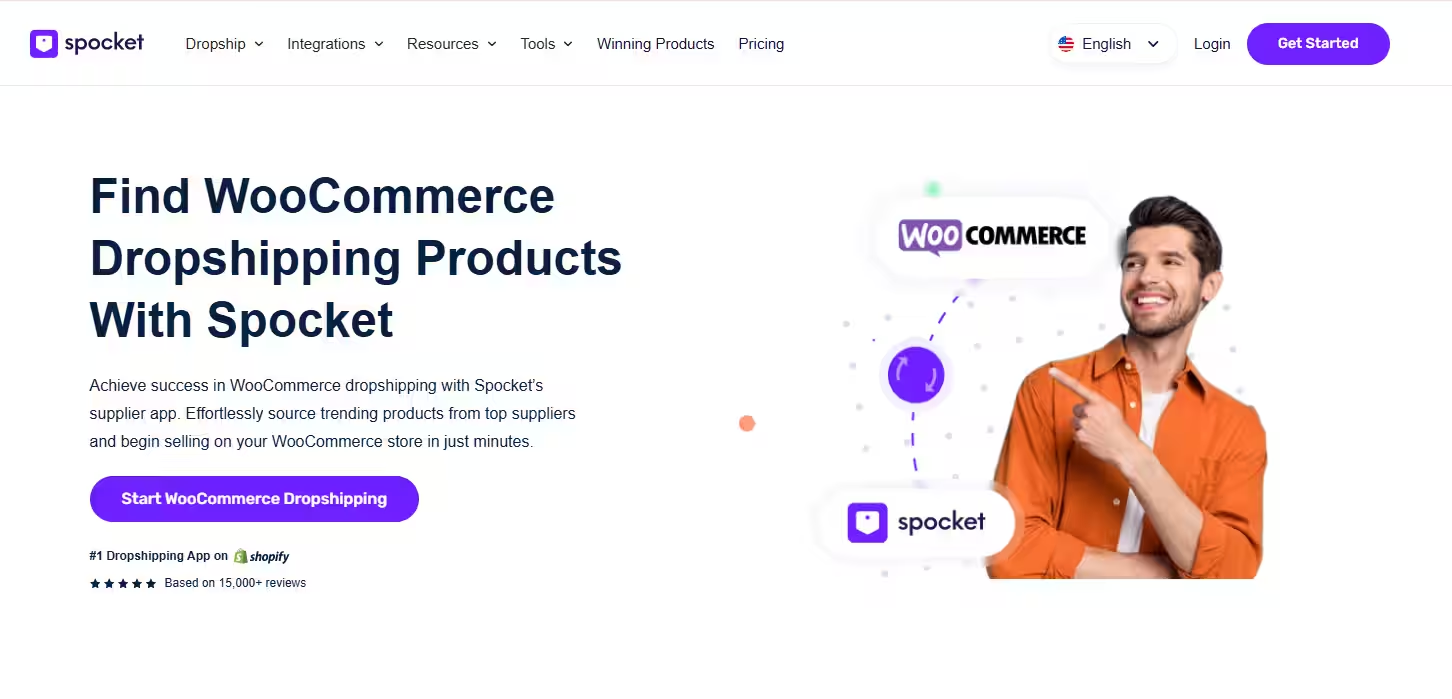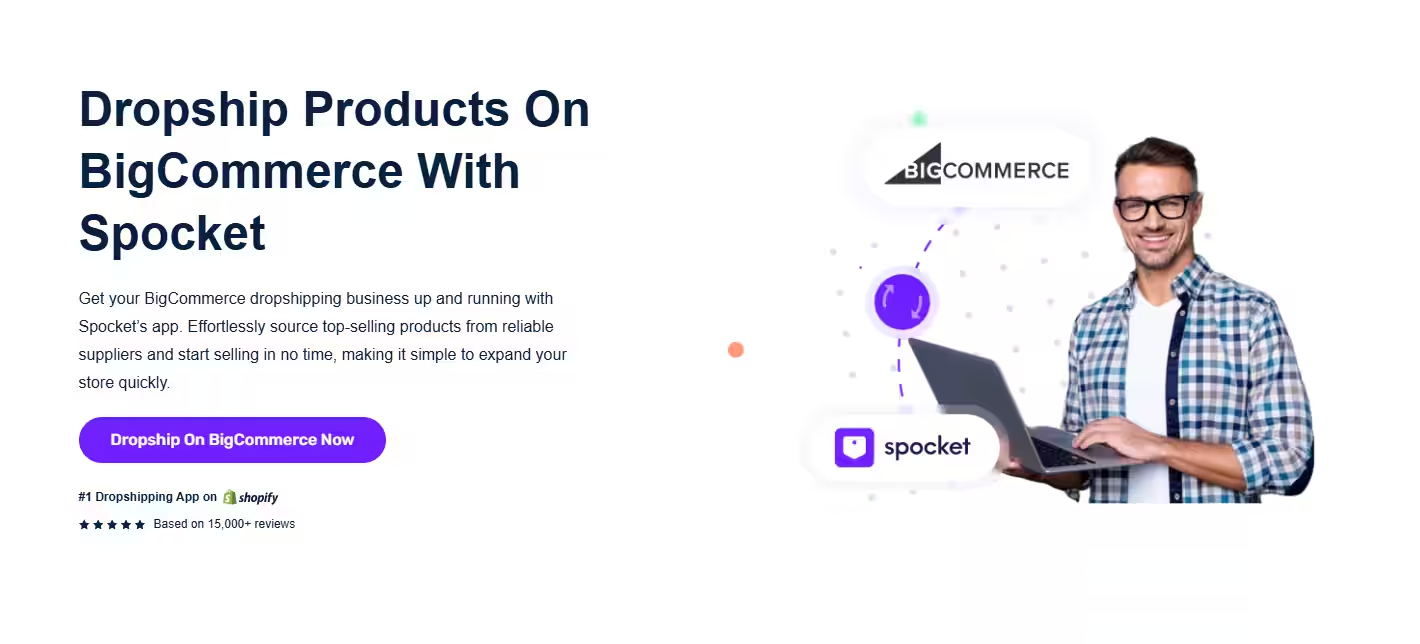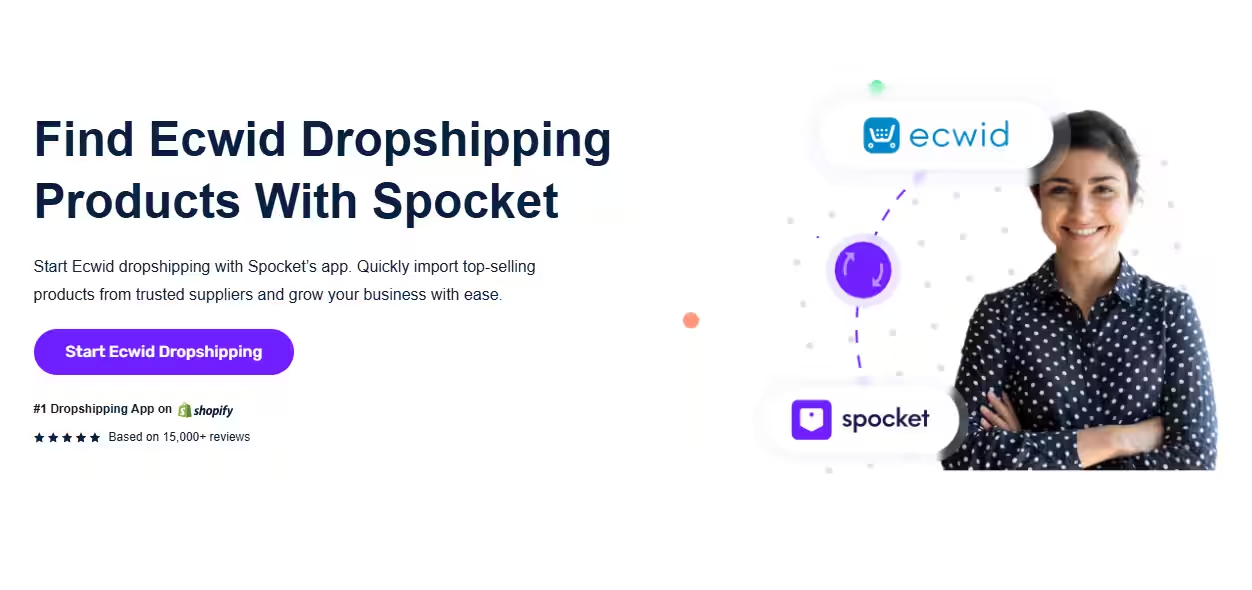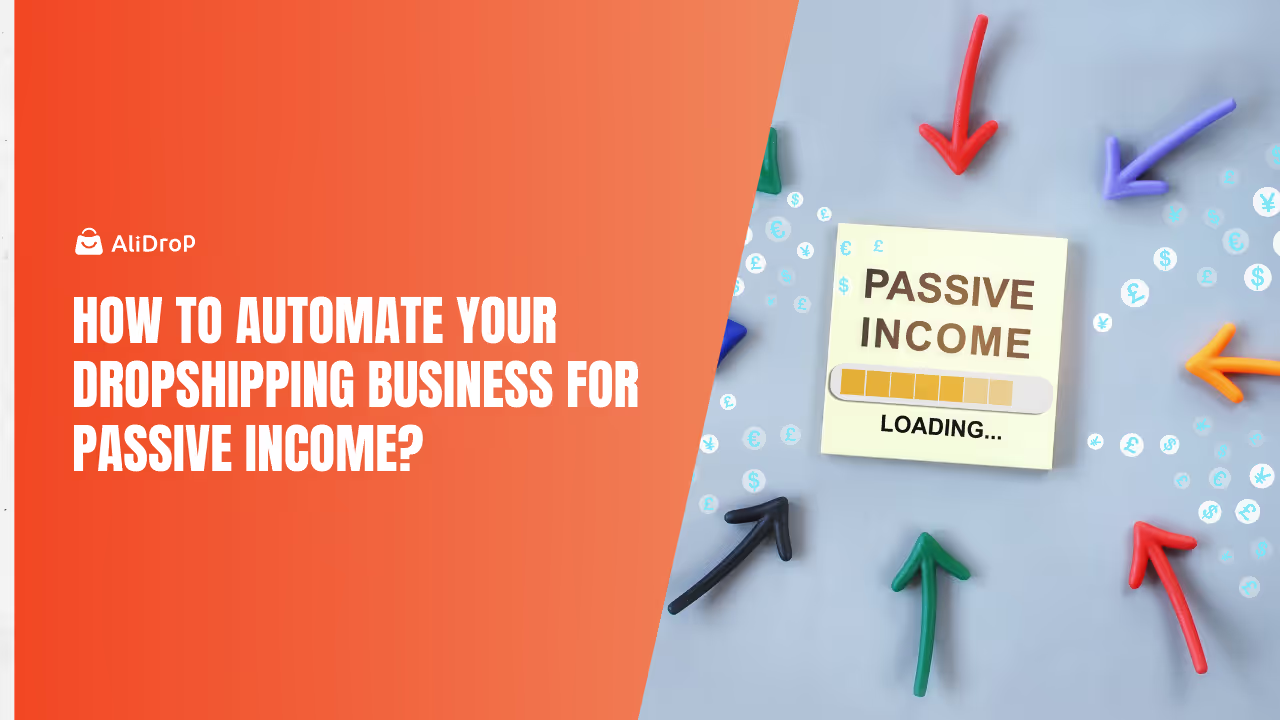The eCommerce world is rapidly evolving, and many entrepreneurs are now exploring Shopify dropshipping alternatives that offer more flexibility, control, and lower costs. While Shopify remains a popular choice, its rising fees, limited customization, and dependence on third-party apps have led to the rise of independent eCommerce ecosystems. These new-age platforms empower dropshippers to build scalable, self-sufficient online stores without being locked into one ecosystem. From open-source solutions to headless commerce and modular platforms, businesses are redefining how they sell online. In this blog, we’ll go beyond Shopify to uncover the best dropshipping alternatives, explore why independent ecosystems are shaping the future of eCommerce, and guide you in choosing the right platform for your brand’s long-term success.
Why Many Dropshippers Are Looking Beyond Shopify
If you’ve been running your store on Shopify for a while, you’ve probably noticed something — it’s not as simple or affordable as it used to be. The costs keep adding up, control feels limited, and scaling smoothly can become a challenge. That’s why so many entrepreneurs are now exploring Shopify dropshipping alternatives that give them more freedom and flexibility.
The Rising Costs and Hidden Fees
Let’s be honest — Shopify isn’t cheap anymore.
You start with a base subscription, then realize you need a few “essential” apps to automate orders, connect suppliers, and track inventory. Each one adds to your monthly bill. Before you know it, your $39 plan looks more like $100+.
Then there are transaction fees. If you don’t use Shopify Payments, Shopify takes an extra cut from every sale — a non-Shopify Payments transaction surcharge that quietly eats into your profits.
And don’t forget annual upgrades or theme renewals. Small costs stack up fast, especially for growing dropshippers managing thin margins.
It’s no surprise many sellers are now switching to independent eCommerce ecosystems where they can control their expenses, choose transparent pricing, and avoid forced upgrades.
Platform Lock-In and Limited Control
You can’t modify core backend logic, use your own hosting, or build deep customizations without paying extra for developers or higher-tier plans. Want to tweak your checkout process? That’s locked unless you’re on Shopify Plus.
Even themes have limitations. You’re confined to their structure, and while custom coding is possible, it’s often patchwork and risky.
Worse, your data portability is restricted. Migrating to another platform means complicated exports, broken integrations, and lost design settings. You don’t own your store as much as you rent it — and that’s pushing creators to seek platforms that offer real independence.
Scalability & Performance Bottlenecks
As your business grows, you expect your platform to scale with you — but Shopify’s pricing tiers make that growth costly.
Traffic spikes? You’ll pay more for advanced analytics, more staff accounts, and priority support. Need faster performance or specialized integrations? You’ll likely need to upgrade to Shopify Plus, which costs thousands per month.
For many, that’s unsustainable. Shopify dropshipping alternatives like WooCommerce, BigCommerce, or headless solutions let merchants scale on their own terms, without mandatory price jumps.
The Push Toward Omnichannel, Headless & Composable Commerce
Modern merchants don’t want to be limited to a single storefront. They want flexibility — to sell on Instagram, TikTok, Amazon, and their website seamlessly.
Shopify’s ecosystem works well if you stay inside its bubble. But the moment you want a headless setup (custom front-end with Shopify backend) or a composable architecture (integrating your own checkout, CMS, or CRM tools), it becomes complex and expensive.
That’s where independent eCommerce ecosystems shine. You can connect what you want, how you want — without waiting for Shopify’s permission or paying extra.
Dropshipping-Specific Gaps
Shopify’s biggest pain point for dropshippers? Automation and supplier flexibility.
Most of its supplier integrations are third-party apps — each with separate fees, limitations, or region restrictions. Some tools don’t sync inventory in real time, leading to overselling or delayed updates. Others don’t support dynamic order routing (choosing the fastest or cheapest supplier per order).
Platforms built for dropshipping from the ground up solve this. They offer native supplier integrations, better automation, and tighter control over fulfillment. That means smoother operations, faster deliveries, and happier customers — without the app chaos.
What Makes a Great Shopify Dropshipping Alternative
When you’re exploring Shopify dropshipping alternatives, it’s not just about finding a cheaper or trendier platform. It’s about finding a solution that helps your business grow without limits. Every dropshipper has unique needs — from automation and scalability to control and profitability. That’s why you need a clear framework to evaluate which platform truly fits your goals.
Let’s break down the key criteria that define a strong, future-ready alternative to Shopify.
1. Transaction Fees & Margins
Why it matters: Every percentage point counts in dropshipping. Hidden transaction fees can silently drain profits, especially when margins are already tight.
Benchmark: Look for platforms that charge 0–1% or no transaction fee at all. Many independent eCommerce ecosystems, like WooCommerce or headless setups, let you choose your own payment gateways — meaning you keep more of what you earn.
2. API & Automation Flexibility
Why it matters: Automation is the backbone of modern dropshipping. From syncing inventory to pushing orders to suppliers, flexible APIs make your business run smoothly without manual work.
Benchmark: Seek platforms offering rich REST or GraphQL APIs. They should support webhooks and seamless supplier integrations so you can automate inventory updates, order tracking, and pricing in real time.
3. Ecosystem & Extensions
Why it matters: Your store doesn’t exist in isolation. You’ll need tools for marketing, fulfillment, reviews, analytics, and more.
Benchmark: A great Shopify dropshipping alternative should offer a marketplace of apps and plugins — but with fair pricing and open integrations. You shouldn’t have to rely on one company’s ecosystem. The more modular and transparent it is, the better.
4. Scalability & Performance
Why it matters: Can your store handle spikes in traffic during sales? Or load fast when you add hundreds of new products? Scalability is key to long-term success.
Benchmark: Look for platforms powered by CDNs, caching, and serverless architecture. These ensure your store loads quickly and stays stable, even under heavy demand. Many headless and composable systems excel here, offering lightning-fast speed and global performance.
5. Data Ownership & Portability
Why it matters: You should own your business data — not lease it. Lock-in can make migrating or expanding your business painful and expensive.
Benchmark: The ideal platform allows full data exports, open file formats, and an open architecture. This gives you freedom to switch hosting, move your store, or integrate new tools whenever you want — no barriers, no ransom fees.
6. Multi-Channel & Omnichannel Support
Why it matters: Your customers shop everywhere — social media, marketplaces, and physical pop-ups. You need a setup that meets them wherever they are.
Benchmark: A powerful alternative should include native integrations for marketplaces, social commerce, and POS systems. Think seamless selling on Amazon, Instagram, or TikTok, with unified inventory and fulfillment tracking.
7. Developer Friendliness
Why it matters: Even if you’re not a developer, your platform’s openness affects what’s possible. A developer-friendly setup means easier customizations, faster troubleshooting, and future-proof innovation.
Benchmark: Choose systems built around webhooks, event-driven design, and headless architecture. This allows your developers (or freelancers) to build custom solutions without fighting against platform restrictions — a must for brands aiming to scale intelligently.
Evaluation Matrix — The Ideal Shopify Dropshipping Alternative
Main Shopify Dropshipping Alternatives (and Independent Ecosystem Players)
If you’re looking for Shopify dropshipping alternatives that give you real freedom — more control, fewer fees, and stronger automation — it’s time to explore what’s beyond the Shopify bubble. Below are the leading platforms and ecosystems redefining modern eCommerce. Let’s break down what makes each one stand out, what to watch out for, and how they perform based on our evaluation framework.
1. WooCommerce (WordPress + Plugin Ecosystem)
WooCommerce gives you complete control — your store, your hosting, your rules. It’s perfect for entrepreneurs who want to build their own ecosystem with flexibility and ownership

Pros:
- Zero transaction fees — you keep 100% of your revenue.
- Highly customizable with thousands of plugins.
- Ideal for SEO and content-heavy stores.
- Compatible with top dropshipping plugins like AliDrop, Spocket, and DSers alternatives.
Cons:
- Requires technical setup and ongoing maintenance.
- Hosting and security are your responsibility.
Pricing: Free core plugin + hosting costs ($5–$25/month) + optional extensions.
2. BigCommerce
BigCommerce focuses on scalability and built-in enterprise features — minus Shopify’s hidden fees. It’s great for merchants scaling fast but still relying on dropshipping.

Pros:
- No transaction fees (even with third-party gateways).
- Built-in SEO and advanced analytics.
- Integrates smoothly with marketplaces like Amazon and eBay.
Cons:
- Fewer customization options than WooCommerce.
- Slight learning curve for backend settings.
Pricing: Starts at $39/month (no transaction fees).
Magento / Adobe Commerce
Magento (now Adobe Commerce) is an open-source powerhouse for brands needing enterprise-level customization.
Pros:
- Complete control over code, hosting, and integrations.
- Supports complex catalogs and automation.
- Ideal for developers or brands with tech teams.
- Integrate with Magento software such as Magento 2 POS to support omnichannel fulfillment with dropshipping and backorder.
Cons:
- Steeper learning curve.
- Expensive if you use Adobe’s managed version.
Pricing: Free (open-source) or custom pricing for Adobe Commerce Cloud.
3. Wix & Squarespace eCommerce
Wix & Squarespace platforms combine design simplicity with eCommerce functionality — great for creators and small businesses testing dropshipping waters.
Pros:
- Drag-and-drop editors; no coding required.
- Built-in SEO, social selling, and payment tools.
- Fast setup and affordable.
Cons:
- Limited backend flexibility.
- Transaction fees apply for lower tiers.
Pricing: Starts at $16–$27/month with additional app fees.
4. Ecwid (Sell via Widgets)
Ecwid lets you turn any existing website — WordPress, Wix, or even a blog — into an online store. It’s perfect for creators who don’t want to rebuild from scratch.

Pros:
- Easy embedding on any site.
- Syncs across multiple platforms and social channels.
- Simple to use for first-time sellers.
Cons:
- Limited customization and backend control.
- API access restricted in free plans.
Pricing: Free plan available; paid plans start at $19/month.
5. Headless / API-First Platforms (Commerce.js, Fabric, Swell, Medusa, Strapi + custom stack)
Headless commerce is the future — separating front-end design from backend logic. This gives full freedom to create ultra-fast, personalized shopping experiences.
Pros:
- Unmatched customization.
- Lightning-fast load times.
- Perfect for scaling modern D2C brands.
Cons:
- Requires technical expertise or developer support.
- Costs can vary depending on your setup.
Pricing: Open-source (Medusa, Strapi) or enterprise-level (Fabric, Swell).
Composable / Microservices Stacks
Composable commerce lets you pick and connect the best tools — for checkout, catalog, CMS, and payments — into one tailored system.
Pros:
- Full flexibility; choose tools that fit your needs.
- Modular and scalable.
- Great for long-term adaptability.
Cons:
- Complex to set up without developer help.
- Integration costs can add up initially..
Pricing: Custom — depends on the tools you choose.
6. Hybrid / Middleware-Centric Models
Hybrid setups combine the reliability of Shopify’s backend with a custom front-end or middleware for more control.
Pros:
- Retain Shopify’s strong infrastructure.
- Freedom to build your own storefront.
- Smooth transition for those not ready to leave Shopify entirely.
Cons:
- Still dependent on Shopify backend.
- App costs may remain high.
Pricing: Same as Shopify tiers + custom middleware costs.
7. Emerging Vertical Platforms
These are niche ecosystems — built for specific markets or product categories (like fashion, print-on-demand, or local eCommerce).
Pros:
- Tailored features for niche sellers.
- Regional payment and logistics support.
- Lower setup cost and faster onboarding.
Cons:
- Smaller app ecosystem.
- Limited scalability compared to big players.
Pricing: Typically $10–$50/month depending on market focus.
Migration & Implementation Strategy for Dropshipping Merchants
Switching from Shopify can feel like a big leap — but sometimes, it’s the smartest move you’ll ever make. Whether you’re tired of rising costs, platform lock-ins, or limited flexibility, finding better Shopify dropshipping alternatives starts with knowing when and how to make the transition smoothly.
Let’s break it down step by step, so you can migrate with confidence — without losing data, SEO rankings, or customers.
When Is It Time to Switch?
There are a few clear signs it’s time to move beyond Shopify:
- Your costs keep climbing: App fees, subscription upgrades, and transaction charges are eating into profits.
- You’ve hit customization limits: You can’t modify checkout flows, automate supplier syncing, or expand integrations.
- You’re outgrowing Shopify’s structure: Your catalog is large, or your business model is more complex (e.g. multi-vendor or regional dropshipping).
- You feel locked in: Data migration and app dependency make you nervous.
- Your tech debt is growing: Too many third-party workarounds are slowing operations.
Step-by-Step Migration Plan
1. Export All Essential Data
Start by exporting your products, orders, and customers. Shopify lets you do this through CSV files. But don’t just export — clean the data. Remove inactive SKUs, update product details, and check images. Clean data reduces headaches later.
Pro tip: Keep a full backup before migration, including customer emails, product metadata, and discount codes.
2. Set Up Supplier Integrations and Automation
Your suppliers are your backbone. So before launching on a new platform, ensure supplier integrations are ready.
- Connect your chosen suppliers or tools (AliDrop, Spocket, or private vendors).
- Test automation: order syncing, inventory updates, and shipping tracking.
- Verify API connections if you’re using an independent ecosystem or headless platform.
3. Rebuild or Improve Workflows
This is your chance to upgrade — not just migrate.
Think of your old Shopify setup as “Version 1.0.” Now you can refine:
- Order routing: Automatically send orders to the fastest or cheapest supplier.
- Bundling: Combine products to boost average order value.
- Split shipping: Handle multiple suppliers per order seamlessly.
4. Test Before the Full Switch
Never switch overnight. Run a sandbox environment or staging version of your new store.
- Test payment gateways, shipping logic, and supplier updates.
- Place dummy orders and confirm status updates flow correctly.
- Double-check automated emails, tax settings, and checkout UX.
5. Protect Your SEO with a Smart Redirection Plan
One of the biggest migration mistakes? Losing hard-earned SEO traffic.
Before launching your new store:
- Use 301 redirects to match old Shopify URLs with the new structure.
- Retain meta titles, descriptions, and schema markup wherever possible.
- Submit a new sitemap to Google once your store is live.
Hybrid or Incremental Migration Approaches
You don’t have to go all-in from day one. Here are smarter, safer ways to transition:
Use the New Platform for New SKUs
Test your new eCommerce ecosystem by adding only fresh products there first. This reduces risk while giving you time to fine-tune integrations.
Run Stores in Parallel
Keep Shopify live while gradually moving traffic and orders to your new store. It’s more work temporarily — but it’s safer for SEO and user trust.
Build Middleware for Gradual Shift
If you’re technically inclined, use middleware to sync Shopify data while your new backend takes over. This gives you flexibility without downtime.
Common Pitfalls & How to Avoid Them
Cost & Resource Estimate
Migration costs depend on complexity:
- DIY migration: $0–$300 (manual exports + basic setup).
- Assisted migration (via plugin or expert): $500–$1,500.
Full ecosystem rebuild (headless/composable): $2,000–$10,000+.
Timeline: typically 1–3 weeks for small stores, 1–2 months for large catalogs or custom stacks.
Pro tip: budget extra for testing and automation tools — they pay off in long-term efficiency.
How to Choose the Right Shopify Alternative for Your Dropshipping Business
So, you’ve explored different Shopify dropshipping alternatives — but which one’s actually right for you? The answer depends on your store size, tech skills, and business goals. Let’s simplify it with a step-by-step decision guide, a quick checklist, and a summary table to help you make a confident choice.
Decision Flow: Find Your Perfect Fit
Think of this as your personal decision map. Answer these questions honestly, and you’ll know which ecosystem fits best:
- Do you want full control and ownership? → Go for WooCommerce or Magento — open-source platforms that give you freedom to customize everything.
- Need to scale fast without worrying about backend setup? → BigCommerce is your best bet. It handles performance, security, and integrations effortlessly.
- Are you a creative person with limited technical skills? → Choose Wix, Squarespace, or Ecwid — simple, intuitive tools built for quick launch.
- Planning to build a modern, tech-forward store? → Try Headless or Composable Commerce stacks. Perfect for developers and ambitious brands that want speed, automation, and flexibility.
- Not ready to fully leave Shopify yet? → Consider a Hybrid setup — keep Shopify as your backend but build your own front-end or middleware.
- Running a niche or regional store? → Explore Emerging vertical platforms that cater to your market, language, and suppliers.
Quick Checklist Before You Decide
Here’s what to check before locking in your new platform:
If you can check all these confidently, you’re ready to make the switch.
Compare by Merchant Type & Tech Level
Different dropshippers need different ecosystems. Here’s how to decide based on your store type and tech skills:
Platforms vs Ideal Use Case
Here is a summarized table for platforms and its use cases
The Future of Independent eCommerce Ecosystems
The eCommerce landscape is shifting fast — and it’s creating massive opportunities for independent brands and dropshippers. The rise of Shopify alternatives is only the beginning. The future is all about flexibility, personalization, and automation.
Headless Commerce
Headless commerce separates the front-end from the back-end, giving merchants full design freedom, faster page loads, and better SEO. Using APIs, you can connect any CMS, checkout, or supplier system and build high-converting storefronts without platform limitations.
Composable Commerce
Instead of relying on one platform, composable commerce lets you pick the best tool for each function — payments, search, catalog, or fulfillment. You can easily upgrade or swap systems without rebuilding your entire store, making your business far more agile and scalable.
AI-Native Automation
AI will power the next generation of eCommerce — from product copy and pricing to inventory and personalization. Tools like Smartli.ai already automate content and catalog workflows, helping you optimize, predict, and personalize with minimal manual effort.
Specialized Ecosystems
The future is niche-focused. Instead of one platform for everyone, specialized ecosystems will serve specific industries and regions, offering tailored suppliers, localized payments, and optimized logistics.
Supplier Automation & APIs
Expect deeper, real-time supplier integrations with live inventory, dynamic pricing, and automated routing — all powered by APIs. This will eliminate sync issues, reduce costs, and streamline order management.
Why Ecosystems Win
Modular ecosystems evolve faster than monolithic platforms. They offer:
- Rapid innovation
- Less vendor dependency
- Lower overall costs
You’re not renting a boxed system — you’re building your own stack.
What This Means for Dropshippers
Independence gives you:
- Control over your margins
- Freedom from platform restrictions and “platform tax”
- Better speed, personalization, and automation
The brands that adapt will dominate.
Your Roadmap
- Audit your current tech stack
- Replace systems one at a time (starting with suppliers or checkout)
- Choose open-API and AI-powered tools
- Explore headless and modular setups
- Stay flexible and avoid vendor lock-in
Conclusion & Call to Action
The future of eCommerce belongs to independent ecosystems — flexible, open, and built for growth. As a dropshipper, your success depends on choosing tools that match your needs, not a platform’s limitations. Evaluate your current setup, identify where Shopify holds you back, and explore the best Shopify dropshipping alternatives that give you control and freedom.
Ready to take the next step? Start your journey with AliDrop — the smarter, faster, and more profitable way to build your independent dropshipping ecosystem. Audit your business today and unlock true eCommerce freedom.
FAQs About Shopify Dropshipping Alternatives
What is the best alternative for Shopify?
The best alternative to Shopify depends on your business needs. WooCommerce is ideal for full control and ownership, while BigCommerce suits scalable stores with minimal maintenance. For creative sellers, Wix and Squarespace offer simple setups. If you’re a tech-savvy merchant, headless and composable platforms like Medusa or Commerce.js provide unmatched flexibility and automation.
Is there a better alternative to dropshipping?
Yes. While dropshipping is low-risk, you can explore print-on-demand, affiliate marketing, or private labeling for higher margins and stronger branding. However, with the right tools and suppliers, modern dropshipping using Shopify dropshipping alternatives like WooCommerce or AliDrop remains one of the most profitable online business models.
What is the cheapest alternative to Shopify for dropshipping?
WooCommerce is the most affordable Shopify alternative because it’s free to use with self-hosting. You only pay for your domain, hosting, and optional plugins. Platforms like Ecwid and Wix also offer low-cost plans, perfect for beginners starting their first dropshipping store.
Which Shopify alternative is best for beginners?
Wix, Squarespace, and Ecwid are beginner-friendly options. They feature drag-and-drop builders, built-in payment gateways, and simple automation tools — no coding needed. You can launch your store quickly and focus on growing sales instead of managing tech setups.
Can I migrate my Shopify store to another platform easily?
Yes, migrating your Shopify store is simple if you follow a clear plan. Export your products, orders, and customers, then import them to your new platform like WooCommerce or BigCommerce. Don’t forget to set up 301 redirects and test automation before switching fully.
What are the advantages of using independent eCommerce ecosystems?
Independent ecosystems give you data ownership, cost savings, and full customization. Unlike closed platforms, they let you integrate suppliers, automate workflows, and scale globally without platform restrictions. It’s freedom designed for long-term growth.
How do I choose the right Shopify dropshipping alternative?
Start by defining your goals. If you want simplicity, pick Wix or Ecwid. For scalability, choose BigCommerce. If you prefer full control, go for WooCommerce. And if you’re ready to modernize your store, explore headless commerce solutions.
Does AliDrop work as a Shopify alternative?
Absolutely. AliDrop is a powerful Shopify alternative built specifically for AliExpress dropshipping. It offers faster automation, access to private suppliers, and full ownership of your store — no monthly fees or hidden costs. It’s perfect for entrepreneurs who want independence and higher profit margins.
Can I run a multi-channel store without Shopify?
Yes. Platforms like BigCommerce and WooCommerce integrate seamlessly with marketplaces such as Amazon, eBay, and social platforms like Facebook and Instagram. You can manage everything from one dashboard and scale your dropshipping business across channels.
Is WooCommerce better than Shopify for dropshipping?
For many sellers, yes. WooCommerce gives you complete control over your store, no transaction fees, and endless customization options. It’s especially powerful when combined with AliDrop, making it one of the most flexible and cost-effective Shopify dropshipping alternatives.























